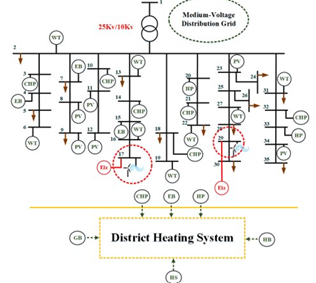This study analysed the potential role of P2G systems to solve congestion issues. The main conclusions from this research were:
- Electrolyzers are able to play positive role in reducing congestion in the MV-DV in case of receiving incentives.
- From system point of view, dynamic electricity prices as incentives have positive influence on improving net operation revenue.
- Developing of electrolyzer in medium-voltage distribution grid for reducing congestion can be cost-effective when the integration level of RES is high enough.
- Electrolyzers require more operation hours in order to be cost-effective when the number of flexibility providers increases in the grid.

- The proposed dynamic price for the particular electrolyzer reduces when the number of flexibility providers increases in the grid.
- A break-even point for electrolyzer in terms of the needed RES integration level can be varied in different electrolyzer’s installed capacities, locations, and types of renewable energy sources.
- Installing electrolyzer up to a certain extent can contribute to reduction in the system cost.
- Despite of proposing dynamic prices, additional remuneration is required to maintain an operation of electrolyzer cost-effective.
- According to this project’s assumption, converting power to heat through electrical boiler reduces the system cost more than converting power to hydrogen through electrolyzer.
- Proposing incentives in MV-DN can have an influence on local heat prices in both directions (Incremental, decremental) in the integrated energy system

